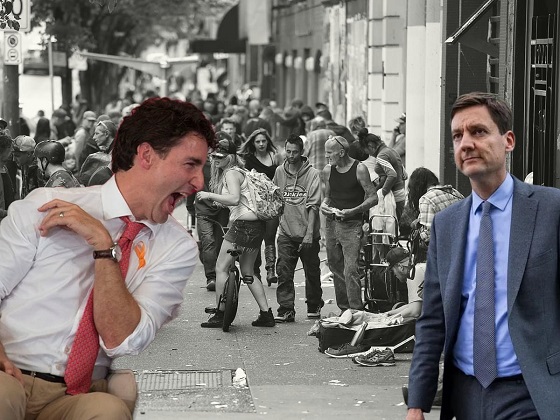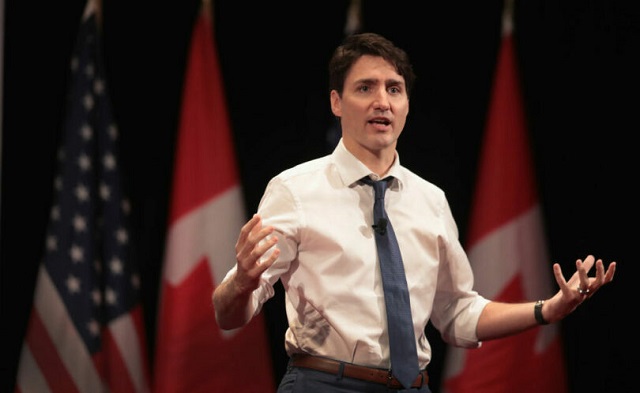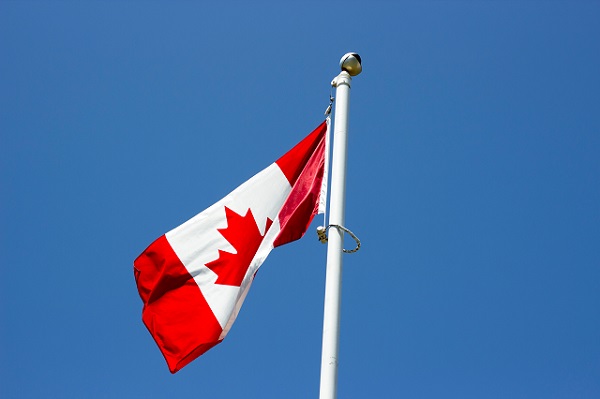Brownstone Institute
Governor Andrew Cuomo: From Hero to Goofball in One Seasonal Virus
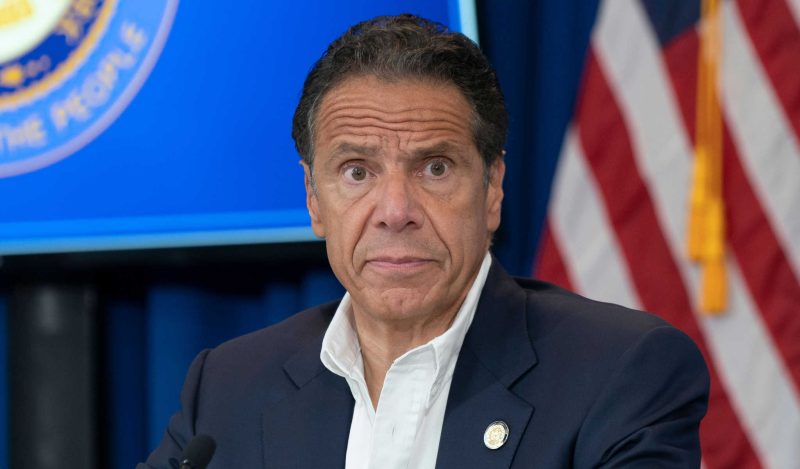
BY
Oh joy, another book by a hero of lockdowns! This time it is from Andrew Cuomo, who rode the disease-panic wave to the heights during the confusion of Spring 2020 before falling to the depths a year later. The adoring crowds, the fawning media, the enthralled masses all went away in a seeming flash, entirely due to some alleged untoward romantic gestures about which some complained.
Cuomo accomplished the deed and then was thrown to the dogs. He went from angel to devil practically overnight. One day he was saving New York from Covid – surely he will soon be president! – and the next he was waking up with nothing to do but look over his royalty checks.
Let us see what he has to say in his memoir. The book was written when he was at the height of his fame, but then withdrawn by the publisher when he crashed to the ground. But as it happens, there are contracts and advances and royalties at stake, so here we are now: American Crisis: Leadership Lessons from the COVID-19 Pandemic. The tone is confident, aggressive, sure-footed, and completely wrong.
We know for sure that he will not admit to having abused his power, personally or politically. He will not say that he had any part in wrecking New York, its commercial culture, its citizens’ sense of self-worth, or its religious freedoms. He will nowhere say that he went too far. He will not admit that he was a craven media tool or that he followed the mania in order to position himself for higher office. He will say none of that, any more than the rest of them have said that.
What does he say? Well, the book is more self-effacing than I expected, even disarming. He tells a good story concerning his personal life and struggles. It seems even sincere, and readers can connect with his professional rise then fall then rise again…and his subsequent fall again. His ideology is on display to the max: a progressive who believes strongly in government in its ideal but is always disappointed in its practice.
But the book is also strange for what it takes for granted, namely that locking down is the proper path to deal with infectious disease. Viruses in all times and places arrive, infect some portion of the population depending on prevalence, bear responsibility for the death of others, and eventually become endemic, which is to say, something we live with. This one was no different in any of its properties. What made this one different was its politicization and the casual but universally held view that life itself had to be fundamentally disrupted by government because of it.
Cuomo himself sneaks this presumption in from the start:
An airborne virus was one of the nightmare scenarios envisioned as a terrorist plot. It is easy to create chaos and overwhelm society with fear when people are afraid to breathe the air. There would be no good news with this virus and no good outcome. Schools and businesses would be closed. The economy would suffer. People would die. Nothing we could do would be enough. There was no possibility for victory, and even FDR and Churchill had at least the possibility of a successful outcome.
Really? No good outcome at all? Failure was baked in? Also, what is this passing mention of schools and businesses being forced to close? That did not happen in South Dakota, Sweden, Nicaragua, or Belarus. Why this concession to massive coercion when such had never been done in past pandemics? Where does this come from? And why did the governor just toss that in there? Why did he never rethink in the midst of his most egregious actions?
Keep in mind that he put this book to bed in the fall of 2020, just before his resignation following his call to open up New York. Here he writes that he defeated the virus. “New York State, a microcosm of the nation, has shown a path forward. We have seen government mobilize to handle the crisis. We have seen Americans come together in a sense of unity to do the impossible. We have seen how the virus is confronted and defeated.”
Remarkable. Consider the following two charts.


What these charts show is what one might have expected from any new virus of this sort with this risk profile. It killed. Then it infected more. Then 99.8% of those infected shook it off and obtained an upgraded immune system, no thanks to the vaccine that stopped neither infection nor spread. Then life got back to normal. Every bit of this trajectory was easily predictable regardless of what government did or did not do.
The virus did not need Cuomo to battle it: the human immune system does the hard work and governments are mere spectators. Public health knew that for decades until suddenly they did not. The temptation to be a hero was too great for vast numbers of people holding public office, Cuomo among them.
What government did was wreck much more than was necessary in the name of doing something. What’s worse is that the things government did reversed the higher-level knowledge that the one group that needed protection from the virus was the vulnerable population, in this case, the elderly and infirm.
Cuomo, on the other hand, signed an order, replicated in many other states, to force nursing homes to accept Covid patients in the extra rooms. No choice. They had to. This led to tens of thousands of unnecessary deaths. More on that in a moment.
On lockdowns, Cuomo simply bakes into the prose the idea that they had to happen. They began in New Rochelle, NY.
“No one was ready to accept that they needed to change how they were living…. As we saw in Westchester that day, local parochial concerns would butt up against major, wide-ranging changes that had to occur in order to combat the virus. As we were instituting this lockdown on New Rochelle, one Democratic assemblywoman who represented Westchester came to my office demanding a meeting; then she simply sat in the second row at a press conference and scowled at me.”
And that’s it: lockdown is the whole scheme. He never doubts it, never even argues for it.
The day after our first COVID case, the legislature passed the law giving the governor emergency powers to handle the crisis. If the legislature had not passed the law, I would not have had the power to do what I would soon do. There would be no executive order closing businesses or schools, no order requiring masks or social distancing. … The law was smart, and it has proven successful.
Now, let’s just jump ahead to the great nursing home scandal. I was curious what Cuomo had to say. I will just quote him.
By early spring, Republicans needed an offense to distract from the narrative of their botched federal response—and they needed it badly. So they decided to attack Democratic governors and blame them for nursing home deaths…. The Trump forces had a simple line: “Thousands died in nursing homes.” It was true. But they needed to add a conspiracy, which was that they died because of a bad state policy that “mandated and directed” that the nursing homes accept COVID-positive people, and these COVID-positive people were the cause of the spread of the disease in the nursing homes. It was a lie. New York State never demanded or directed that any nursing home accept a COVID-positive patient.”
That’s fascinating because I’m almost sure that I saw such an order. I look at the New York State website and it has been taken down. I found it on the Internet Archive. It is on New York State letterhead.

It reads as follows:
COVID-19 has been detected in multiple communities throughout New York State. There is an urgent need to expand hospital capacity in New York State to be able to meet the demand for patients with COVID-19 requiring acute care. As a result, this directive is being issued to clarify expectations for nursing homes (NHs) receiving residents returning from hospitalization and for NHs accepting new admissions…. No resident shall be denied re-admission or admission to the NH solely based on a confirmed or suspected diagnosis of COVID-19. NHs are prohibited from requiring a hospitalized resident who is determined medically stable to be tested for COVID-19 prior to admission or readmission.
Oh. So it wasn’t a lie after all. And anyone can check this. Read the above. That certainly sounds like New York State directed nursing homes to accept Covid-positive patients. Denying that he did this amounts to pettifoggery over terms. The import was perfectly obvious. Why not just admit that he made a mistake?
I’m tempted to end this review there. But it actually gets worse. At one point, Cuomo writes that his heroics actually worked and that this is obvious. He is or was a completely unrepentant lockdower:
States like Arizona, Florida, and Texas that followed Trump’s demands to reopen quickly saw increased infection rates and needed to close their economies back down—reopening only to re-close. As a result, the financial markets were distressed with the volatility in these states. This stood in stark contrast to New York, where as of this writing 75 percent of our economy is open and our infection rate has been consistently 1 percent or below for nearly three months and among the lowest in the nation. It is incomprehensible that people still support Trump’s disproven theories. The states that most closely followed Trump’s “guidance” were doing the worst.
Look again at the charts above. The virus was only getting started when he turned in this text. He wrote those words during a seasonal downturn. Infections were still coming and coming in wave after wave. New York fared as bad as any state, certainly far worse than Florida or other open states. Meanwhile, New York drove residents out, and the state is in far worse economic condition than most.
And yet here he is taking credit for an intelligent and hands-on approach that wrecked the lives, liberties, and property of residents of the state, who, to this day, have yet to regain their composure. He did this. He became famous and beloved for it. And to this day, based on this book, he still believes that he was right.
Cuomo can’t imagine – truly – that he might have done anything wrong except perhaps communicated more clearly. In truth, governments could have forced everyone to paint their faces bright blue and wear frying pans for shoes and it would not have changed the pandemic outcome from what it was going to be. The virus never cared. But don’t tell that to Cuomo: the upshot of his book is that he saved New York. Nothing will convince him otherwise.
In short, don’t read this book looking for an apology. These politicians all panicked, as John Tamny argued from the beginning. No matter the policy, the pandemic was going to recede into memory, as it has. No matter how badly this class of politicians performed, somehow they all managed to claim to have done the right thing, and to earn royalties on their ghost-written accounts of their genius.
Even given everything, the book is not all bad. His personal stories are self effacing and engaging. He is a real person with a real life, with choices to make, risks to take, difficulties to face, family struggles, and so on. He was free to engage life to its fullest in 2020, unlike the 20 million people he locked down and robbed of all such opportunities. He believed that it was the right thing to do because Fauci was saying that it was. It was not in fact the right thing to do.
I would like to end by echoing Cuomo’s tribute to those who were shoved out in front to face the virus while the laptoppers languished at home in hiding. He is exactly right to say the following:
The heroes who made this happen were the working families of New York. When we were in our moment of need, we called on the blue-collar New Yorkers to show up for everyone. We needed them to come to work and risk their health so that so many of us could stay safely at home. These are the people who have received the fewest rewards from society but from whom we now asked the most.
These are the people who would have been most justified in refusing our call. They were not the rich and the well-off. They were not the highly paid. They have not been given anything more than they deserved. They had no obligation to risk their health and the health of their families. But they did it simply because “it was the right thing to do.” But for some that is enough. For some that is everything.
These heroes are the people who live in places like Queens, where I grew up. These are the people working hard to better themselves and their families. These are parents concerned first and foremost with protecting their families, but who still showed up every day as nurses, National Guard members, train operators, bus drivers, hospital workers, police officers, grocery store employees, food delivery drivers. They are Puerto Ricans, Haitians, African Americans, Dominicans, Asians, Guatemalans. These are the immigrants who love America, who make America, and who will fight for it.
These are the heroes of this battle. When COVID began, I felt it was unfair to call on them to carry such a heavy burden. I feared I would put them in harm’s way. But we didn’t have an option if society was to function. We needed food, hospitals, and electricity to stay alive.
All through this difficult endeavor there was never a moment when these people refused to show up or leveraged more benefits for themselves. At the beginning of a battle no one knows who will actually survive. Courage is determined by the willingness to enter the field. No one knew that when we started, the infection rate among our essential workers would be no higher than the general community infection rate. They have my undying admiration and the gratitude of every true New Yorker.
We can only say to that: Amen! These people do deserve deep gratitude. They also deserve a government that will never again conscript them to go to work for the professional class in order that the well-to-do can keep clean and free of pathogens. That the people Cuomo rightly celebrates were so treated is a violation of the social contract, and now have every reason to be bitter. And don’t you love the comment that “We needed food, hospitals, and electricity to stay alive?” Who exactly is “we” here?
We know. We know all too well.
Brownstone Institute
A Coup Without Firing a Shot

From the Brownstone Institute
BY
We all have a different starting place and journey but each of us has the following in common. We’ve realized that official sources, the ones we’ve trusted in the past, are not going to make any sense of the above for us. We have to seek out alternatives and put the story together ourselves. And this we must do because the only other choice is to accept that all of the above consists of a random series of disconnected and pointless events, which is surely not true.
The last few years can be tracked at two levels: the physical reality around us and the realm of the intellectual, mental, and psychological.
The first level has presented a chaotic narrative of the previously unthinkable. A killer virus that turned out to be what many people said it was in February 2020: a bad flu with a known demographic risk best treated with known therapeutics. But that template and the ensuing campaign of fear and emergency rule gave rise to astonishing changes in our lives.
Social functioning was wholly upended as schools, businesses, churches, and travel were ended by force. The entire population of the world was told to mask up, despite vast evidence that doing so achieved nothing in terms of stopping a respiratory virus.
That was followed by a breathtaking propaganda campaign for a shot that failed to live up to its promise. The cure for the disease itself caused tremendous damage to health including death, a subject about which everyone cared intensely before the shot and then strangely forgot about after.
Protests against the goings-on were met with media smears, shutdowns, and even the cancellation of bank accounts. However, and simultaneously, other forms of protest were encouraged, insofar as they were motivated by a more proper political agenda against structural injustices in the old system of law and order. That was a strange confluence of events, to say the least.
In the midst of this, which was wild enough, came new forms of surveillance, censorship, corporate consolidation, an explosion of government spending and power, rampant and global inflation, and hot wars from long-running border conflicts in two crucial regions.
The old Declarations of rules on the Internet put free speech as a first principle. Today, the hosting website of the most famous one, signed by Amnesty International and the ACLU, is gone, almost as if it never existed. In 2022, it came to be replaced by a White House Declaration on the Future of the Internet, that extols stakeholder control as the central principle.
All the while, once-trusted sources of information – media, academia, think tanks – have steadfastly refused to report and respond in truthful ways, leading to a further loss of public trust not just in government and politics but also in everything else, including corporate tech and all the higher order sectors of the culture.
Also part of this has been a political crisis in many nations, including the use of sketchy election strategies justified by epidemiologic emergency: the only safe way to vote (said the CDC) is absentee via the mails. Here we find one of many overlapping parallels to a scenario hardly ever imagined: infectious disease deployed as a cover for political manipulation.
Crucially and ominously, all of these mind-blowing developments took place in roughly similar ways the world over, and with the same language and model. Everywhere people were told “We are all in this together,” and that social distancing, masking, and vaxxing was the correct way out. Media was also censored everywhere, while anti-lockdown protestors (or even those who simply wanted to worship together in peace) were treated not as dissidents to be tolerated but irresponsible spreaders of disease.
Can we really pretend that all of this is normal, much less justified? The exhortation we receive daily is that we can and must.
Really? At what point did you realize that you had to start thinking for yourself?
We all have a different starting place and journey but each of us has the following in common. We’ve realized that official sources, the ones we’ve trusted in the past, are not going to make any sense of the above for us. We have to seek out alternatives and put the story together ourselves. And this we must do because the only other choice is to accept that all of the above consists of a random series of disconnected and pointless events, which is surely not true.
That leads to the second layer of comprehension; the intellectual, mental, and psychological. Here is where we find the real drama and incalculable difficulties.
At the dawn of lockdowns, what appeared to be a primitive public health error seemed to be taking place. It seemed like some scientists at the top, who gained an implausible amount of influence over government policy, had forgotten about natural immunity and were under the impression that it was good for health to stay home, be personally isolated, avoid exercise, and eat only takeout food. Surely such preposterous advice would be revealed soon as the nonsense it was.
How in the world could they be so stupid? How did they gain so much influence, not just nationally but all over the world? Did the whole of humanity suddenly forget about all known science in every field from virology to economics to psychology?
As time went on, more and more anomalies appeared that made that judgment seem naïve. As it turns out, what was actually taking place had something to do with a move on the part of security and intelligence services. It was they who were given rule-making authority on March 13, 2020, and that’s why so much of what we needed to know was and is considered classified.
There were early initial reports that the virus itself might have been leaked from a US-backed lab in Wuhan, which introduces the entire subject of the US bioweapons program. This is a very deep rabbit hole itself, thoroughly exposed in Robert F. Kennedy, Jr.’s The Wuhan Cover-Up. There was a reason that topic was censored: it was all true. And as it turns out, the vaccine itself was able to bypass the normal approval process by slipping through under the cover of emergency. In effect, it came pre-approved by the military.
As the evidence continues to roll in, more and more rabbit holes appear, thousands of them. Each has a name: Pharma, CCP, WHO, Big Tech, Big Media, CBDCs, WEF, Deep State, Great Reset, Censorship, FTX, CISA, EVs, Climate Change, DEI, BlackRock, and many more besides. Each of these subject areas has threads or thousands of them, each connecting to more and to each other. At this point, it is simply not possible for a single person to follow it all.
To those of us who have been steeped in following the revelations day by day, and trying to keep up with putting them together into a coherent model of what happened to us, and what is still going on, the ominous reality is that the traditional understanding of rights, liberties, law, business, media, and science were dramatically overthrown in the course of just a few months and years.
Nothing operates today as it did in 2019. It’s not just that functioning broke. It was broken and then replaced. And the surreptitious coup d’état with no shots fired is still ongoing, even if that is not the headline.
Of this fact, many of us today are certain. But how common is this knowledge? Is it a vague intuition held by many members of the public or is it known in more detail? There are no reliable polls. We are left to guess. If any of us in 2019 believed we had our finger on the pulse of the national mood or public opinion generally, we certainly do not anymore.
Nor do we have access to the inner workings of government at the highest levels, much less the conversations going on among the winners of our age, the well-connected ruling elites who seemed to have gamed the entire system for their own benefit.
It’s so much easier to regard the whole thing as a giant confusion or accident on grounds that only cranks and crazies believe in conspiracy theories. The trouble with that outlook is that it posits something even more implausible; that something this gigantic, far-reaching, and dramatic could have happened with no real intentionality or purpose or that it all fell together as a huge accident.
Brownstone Institute has published more than 2,000 articles and 10 books exploring all over the above topics. Other venues and friends are out there helping us with this research and discovery, issue by issue. Even so, a great deal of responsibility falls on this one institution, the main work of which is providing support for dissident and displaced voices, which is implausible since it was only founded three years ago. We are deeply grateful for our supporters and would welcome you to join them.
As for the intellectuals we once revered for their curiosity and wisdom, most seem to have gone into hiding, either unable to adapt to the new realities or just unwilling to risk their careers by exploring hard topics. It’s understandable but still tragic. Most are happy to pretend like nothing happened or celebrate the change as nothing but progress. As for journalists, the New York Times publishes daily commentaries dismissing the Constitution as a dated anachronism that has to go and no one thinks much about it.
There is a lot to sort out. So much has changed so quickly. No sooner than the dust seems to be settling from one upheaval, there is another and then another. Keeping up with it all causes a level of psychological brain scramble on a scale we’ve never previously experienced.
It’s easier to wait for the historians to tell the next generation what happened. But maybe, just maybe, by stepping up and telling the story as we see it in real time, we can make a difference in stopping this madness and restoring some sane and normal freedom back to the world.
Brownstone Institute
Is the Overton Window Real, Imagined, or Constructed?
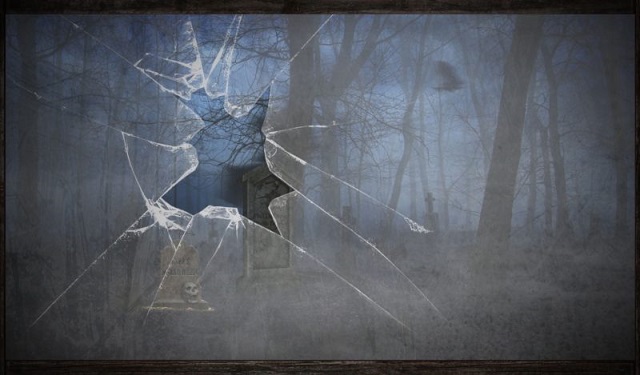
From the Brownstone Institute
BY
Ideas move from Unthinkable to Radical to Acceptable to Sensible to Popular to become Policy.
The concept of the Overton window caught on in professional culture, particularly those seeking to nudge public opinion, because it taps into a certain sense that we all know is there. There are things you can say and things you cannot say, not because there are speech controls (though there are) but because holding certain views makes you anathema and dismissable. This leads to less influence and effectiveness.
The Overton window is a way of mapping sayable opinions. The goal of advocacy is to stay within the window while moving it just ever so much. For example, if you are writing about monetary policy, you should say that the Fed should not immediately reduce rates for fear of igniting inflation. You can really think that the Fed should be abolished but saying that is inconsistent with the demands of polite society.
That’s only one example of a million.
To notice and comply with the Overton window is not the same as merely favoring incremental change over dramatic reform. There is not and should never be an issue with marginal change. That’s not what is at stake.
To be aware of the Overton window, and fit within it, means to curate your own advocacy. You should do so in a way that is designed to comply with a structure of opinion that is pre-existing as a kind of template we are all given. It means to craft a strategy specifically designed to game the system, which is said to operate according to acceptable and unacceptable opinionizing.
In every area of social, economic, and political life, we find a form of compliance with strategic considerations seemingly dictated by this Window. There is no sense in spouting off opinions that offend or trigger people because they will just dismiss you as not credible. But if you keep your eye on the Window – as if you can know it, see it, manage it – you might succeed in expanding it a bit here and there and thereby achieve your goals eventually.
The mission here is always to let considerations of strategy run alongside – perhaps even ultimately prevail in the short run – over issues of principle and truth, all in the interest of being not merely right but also effective. Everyone in the business of affecting public opinion does this, all in compliance with the perception of the existence of this Window.
Tellingly, the whole idea grows out of think tank culture, which puts a premium on effectiveness and metrics as a means of institutional funding. The concept was named for Joseph Overton, who worked at the Mackinac Center for Public Policy in Michigan. He found that it was useless in his work to advocate for positions that he could not recruit politicians to say from the legislative floor or on the campaign trail. By crafting policy ideas that fit within the prevailing media and political culture, however, he saw some successes about which he and his team could brag to the donor base.
This experience led him to a more general theory that was later codified by his colleague Joseph Lehman, and then elaborated upon by Joshua Treviño, who postulated degrees of acceptability. Ideas move from Unthinkable to Radical to Acceptable to Sensible to Popular to become Policy. A wise intellectual shepherd will manage this transition carefully from one stage to the next until victory and then take on a new issue.
The core intuition here is rather obvious. It probably achieves little in life to go around screaming some radical slogan about what all politicians should do if there is no practical means to achieve it and zero chance of it happening. But writing well-thought-out position papers with citations backed by large books by Ivy League authors and pushing for changes on the margin that keep politicians out of trouble with the media might move the Window slightly and eventually enough to make a difference.
Beyond that example, which surely does tap into some evidence in this or that case, how true is this analysis?
First, the theory of the Overton window presumes a smooth connection between public opinion and political outcomes. During most of my life, that seemed to be the case or, at least, we imagined it to be the case. Today this is gravely in question. Politicians do things daily and hourly that are opposed by their constituents – fund foreign aid and wars for example – but they do it anyway due to well-organized pressure groups that operate outside public awareness. That’s true many times over with the administrative and deep layers of the state.
In most countries, states and elites that run them operate without the consent of the governed. No one likes the surveillance and censorial state but they are growing regardless, and nothing about shifts in public opinion seem to make any difference. It’s surely true that there comes a point when state managers pull back on their schemes for fear of public backlash but when that happens or where, or when and how, wholly depends on the circumstances of time and place.
Second, the Overton window presumes there is something organic about the way the Window is shaped and moves. That is probably not entirely true either. Revelations of our own time show just how involved are major state actors in media and tech, even to the point of dictating the structure and parameters of opinions held in the public, all in the interest of controlling the culture of belief in the population.
I had read Manufacturing Consent (Noam Chomsky and Edward Herman; full text here) when it came out in 1988 and found it compelling. It was entirely believable that deep ruling class interests were more involved than we know about what we are supposed to think about foreign-policy matters and national emergencies, and, further, entirely plausible that major media outlets would reflect these views as a matter of seeking to fit in and ride the wave of change.
What I had not understood was just how far-reaching this effort to manufacture consent is in real life. What illustrates this perfectly has been media and censorship over the pandemic years in which nearly all official channels of opinion have very strictly reflected and enforced the cranky views of a tiny elite. Honestly, how many actual people in the US were behind the lockdowns policy in terms of theory and action? Probably fewer than 1,000. Probably closer to 100.
But thanks to the work of the Censorship Industrial Complex, an industry built of dozens of agencies and thousands of third-party cutouts including universities, we were led to believe that lockdowns and closures were just the way things are done. Vast amounts of the propaganda we endured was top down and wholly manufactured.
Third, the lockdown experience demonstrates that there is nothing necessarily slow and evolutionary about the movement of the Window. In February 2020, mainstream public health was warning against travel restrictions, quarantines, business closures, and the stigmatization of the sick. A mere 30 days later, all these policies became acceptable and even mandatory belief. Not even Orwell imagined such a dramatic and sudden shift was possible!
The Window didn’t just move. It dramatically shifted from one side of the room to the other, with all the top players against saying the right thing at the right time, and then finding themselves in the awkward position of having to publicly contradict what they had said only weeks earlier. The excuse was that “the science changed” but that is completely untrue and an obvious cover for what was really just a craven attempt to chase what the powerful were saying and doing.
It was the same with the vaccine, which major media voices opposed so long as Trump was president and then favored once the election was declared for Biden. Are we really supposed to believe that this massive switch came about because of some mystical window shift or does the change have a more direct explanation?
Fourth, the entire model is wildly presumptuous. It is built by intuition, not data, of course. And it presumes that we can know the parameters of its existence and manage how it is gradually manipulated over time. None of this is true. In the end, an agenda based on acting on this supposed Window involves deferring to the intuitions of some manager who decides that this or that statement or agenda is “good optics” or “bad optics,” to deploy the fashionable language of our time.
The right response to all such claims is: you don’t know that. You are only pretending to know but you don’t actually know. What your seemingly perfect discernment of strategy is really about concerns your own personal taste for the fight, for controversy, for argument, and your willingness to stand up publicly for a principle you believe will very likely run counter to elite priorities. That’s perfectly fine, but don’t mask your taste for public engagement in the garb of fake management theory.
It’s precisely for this reason that so many intellectuals and institutions stayed completely silent during lockdowns when everyone was being treated so brutally by public health. Many people knew the truth – that everyone would get this bug, most would shake it off just fine, and then it would become endemic – but were simply afraid to say it. Cite the Overton window all you want but what is really at issue is one’s willingness to exercise moral courage.
The relationship between public opinion, cultural feeling, and state policy has always been complex, opaque, and beyond the capacity of empirical methods to model. It’s for this reason that there is such a vast literature on social change.
We live in times in which most of what we thought we knew about the strategies for social and political change have been blown up. That’s simply because the normal world we knew only five years ago – or thought we knew – no longer exists. Everything is broken, including whatever imaginings we had about the existence of this Overton window.
What to do about it? I would suggest a simple answer. Forget the model, which might be completely misconstrued in any case. Just say what is true, with sincerity, without malice, without convoluted hopes of manipulating others. It’s a time for truth, which earns trust. Only that will blow the window wide open and finally demolish it forever.
-

 conflict2 days ago
conflict2 days agoCol. Douglas Macgregor torches Trump over support for bill funding wars in Ukraine and Israel
-
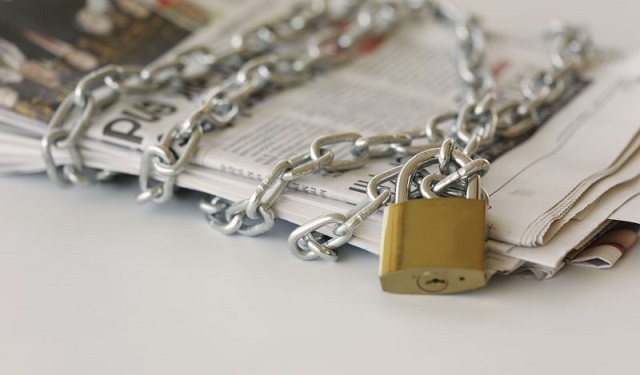
 Censorship Industrial Complex2 days ago
Censorship Industrial Complex2 days agoNow We Are Supposed to Cheer Government Surveillance?
-

 Alberta2 days ago
Alberta2 days agoRed Deer Doctor critical of Alberta’s COVID response to submit report to Danielle Smith this May
-

 Health2 days ago
Health2 days agoTransgender activists are threatening the author of scathing UK report on child ‘sex changes’
-

 Business17 hours ago
Business17 hours agoUN plastics plans are unscientific and unrealistic
-
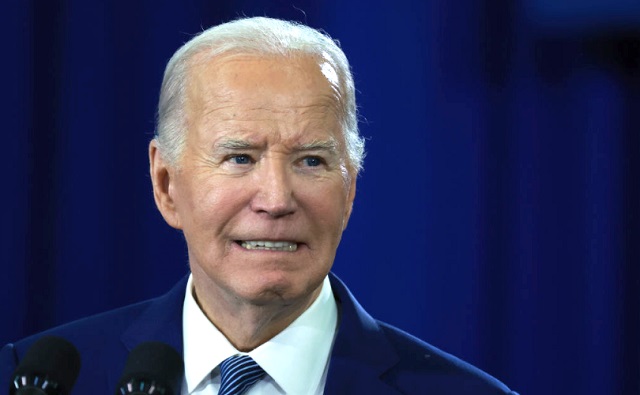
 International2 days ago
International2 days agoBiden admin expands Title IX to include ‘gender identity,’ sparking conservative backlash
-

 Business16 hours ago
Business16 hours agoTaxpayers criticize Trudeau and Ford for Honda deal
-

 Alberta2 days ago
Alberta2 days agoAlberta’s baby name superstar steals the show again



